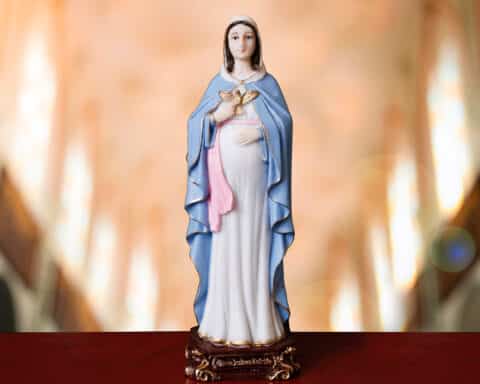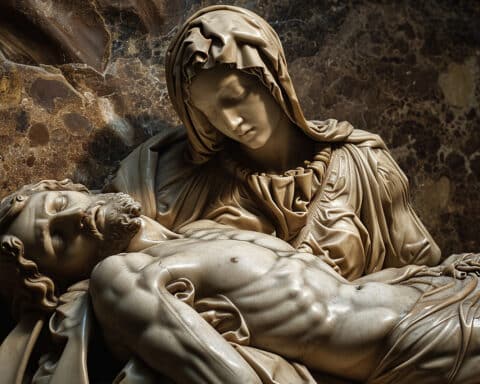
— Eugene Herkins, Naples, Florida
Answer: Belief in the bodily assumption of Mary into heaven is universal in the Eastern, Western and Orthodox Churches; no one doubts this. However, the exact historical details are sketchy, including the location (Jerusalem or Ephesus). To begin, we need to distinguish two aspects of Mary’s assumption — first, the departure of Mary from this life, and second, the assumption (the taking up) of her body into heaven.
Some hold that she died a natural death and that her body was later taken up to heaven. This is the more common understanding. Some, however, argue that she did not die but that she was taken up to heaven, body and soul together. The Church does not insist on either view but only requires that we acknowledge that her body and soul are now in heaven.
As for the day or year of Our Lady’s death, nothing certain is known. Even the most ancient sources mentioning her assumption, Epiphanius, writing toward the end of the fourth century, said that he knew nothing definite about the details. We hear another reference to the Assumption in the mid-fifth century. St. Juvenal, bishop of Jerusalem, at the Council of Chalcedon in 451, replying to the emperor who wished to possess the body of the Mother of God, said that Mary died in the presence of the apostles, with the exception of St. Thomas. However, when her tomb was opened, upon the request of St. Thomas, it was found empty; wherefrom the apostles concluded that the body was taken up to heaven.
While two cities claim to be the place of her assumption (Jerusalem and Ephesus), the consensus favors Jerusalem. Indeed, in Jerusalem, at the foot of the Mount of Olives, there is a spacious cave said to be the tomb of Mary. Here, too, historical details are sketchy, and there is no mention of the tomb of Mary in Jerusalem prior to the end of the sixth century. For those who favor the view that the Assumption occurred in Jerusalem, there is also the Church of the Dormition on Mt. Zion in Jerusalem that claims to be the site of her death. Subsequently, her body was placed in the tomb down the hill at the foot of the Mount of Olives, and that tomb was later discovered to be empty.
What this means is that Mary, while she lived for a while in Ephesus with St. John, at some point returned to Jerusalem, perhaps for a feast day, and while there ended her earthly pilgrimage.
This much remains clear: the universal Church, both East and West, Orthodox and Catholic, all hold to the ancient teaching, going back as far as we can remember, that Mary’s body was taken up into heaven. This took place either at her death or shortly thereafter. This event likely took place in Jerusalem, but may have happened in Ephesus. Beyond these clear teachings, the exact details are uncertain.
Did Jesus go to hell?
Question: Two questions of a linguistic nature: Why does the creed speak of Jesus as going to hell? Also, why in the Eucharistic prayer do we speak of Jesus’ hands as being “holy and venerable?” This seems hackneyed.
— Andrew Saul, Media, Pennsylvania
Answer: As for the descent to “hell,” Jesus did not go down among the damned. Rather he went to “Sheol,” the place in Jewish teaching where the righteous dead went and awaited the coming of the Messiah. The English language, unfortunately, does a poor job of distinguishing Sheol from the hell of the damned.
As for your concern that the words of the Roman Canon are “hackneyed,” this is a matter of opinion. “Holy and venerable” is a fairly literal rendering of the Latin (sanctas ac venerábiles manus suas), and most other languages render the Latin this way. “Hackneyed” is a word that usually means something is trite or overused, but the ancient text was composed as early as the fifth century. To be sure, there is a “sacral” quality to the text of the Roman Canon to the degree that it does not use modern parlance. But one ought not to expect that a sacred and ancient text be rendered in merely modern ways.
Msgr. Charles Pope is the pastor of Holy Comforter-St. Cyprian in Washington, D.C., and writes for the Archdiocese of Washington, D.C. at blog.adw.org. Send questions to msgrpope@osv.com.





